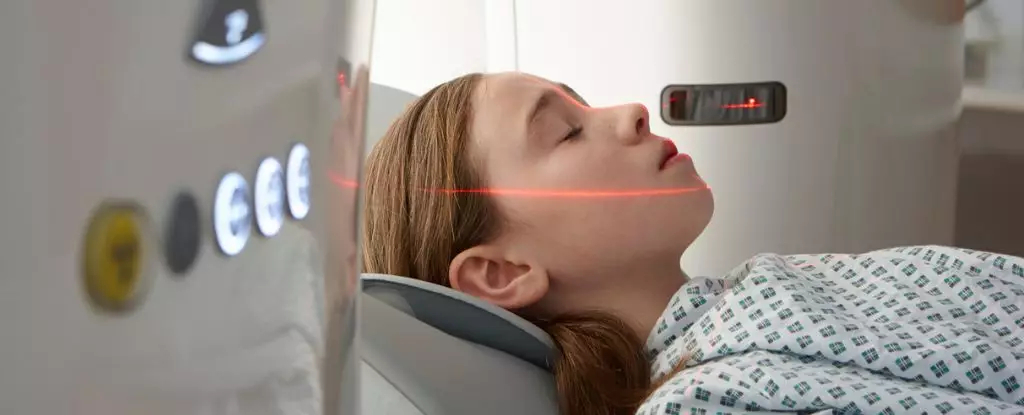The increasing reliance on computed tomography (CT) scans among Americans presents an urgent dilemma. On one hand, these scans can be life-saving tools of modern medicine, adept at diagnosing conditions that may otherwise remain hidden. On the other hand, they carry a potential risk that must be critically evaluated: the exposure to low doses of ionizing radiation that could increase the likelihood of cancer over time. With a staggering 30% rise in the number of CT examinations since 2007, it is crucial to address this juxtaposition of benefit and harm. The growing comfort with this technology may inadvertently lead patients and healthcare providers to overlook possible long-term consequences.
While the individual risk of developing cancer from a single CT scan may be minuscule, public health discussions must take a broader view. Recent projections indicate that if current trends continue, the potential for CT scans to contribute to future cancer diagnoses could reach a daunting 103,000 cases this year alone. Such numbers elevate CT scans not only as vital diagnostic resources but also as relevant public health concerns equated with other recognized risk factors, such as excessive alcohol consumption. As the discourse evolves, it becomes imperative to cultivate awareness surrounding this technology without instilling undue fear among patients.
Scientific Concerns: The Evidence Gap
The heart of this conversation lies in the scientific community’s ongoing debate regarding the connection between low-dose radiation and cancer risk. While the link between high radiation exposure and cancer is well-established, the association with low doses is less clear. Much of the current understanding derives from studies on atomic bomb survivors and individuals affected by nuclear power plant disasters, painting a picture that may not directly translate to contemporary medical imaging practices. For instance, historical data suggests that Hiroshima survivors, who experienced radiation comparable to several CT scans, exhibited an elevated cancer risk across their lifetimes. Yet, translating these findings to today’s medical scenarios remains speculative.
The estimates regarding future cancer cases from CT scans are reliant on assumptions drawn from past tragedies and may not accurately reflect the evolving technology and lower radiation doses used in modern imaging. While the anticipated data leverages findings from the UCSF International CT Dose Registry, contextualizing these figures within the framework of actual technological advancements is essential. The diverse parameters involved, including the specifics of the CT machines, the type of scan, and patient size, must be thoroughly understood before drawing absolute conclusions.
Patient Vulnerability: Children at Higher Risk
Among various demographics, the potential risks associated with low-dose ionizing radiation are notably more pronounced in vulnerable populations, including children and adolescents. Given their developing bodies and longer life expectancy, young patients face greater risks in terms of radiation-induced cancers. Alarmingly, the potential for thyroid cancers is particularly concerning for infants scanned before their first birthday. As healthcare professionals balance the need for accurate diagnosis with the principle of “do no harm,” extra vigilance is warranted.
Experts emphasize the importance of assessing individual patient risk factors before recommending CT scans. Medical radiation specialists advocate for a cautious approach, urging health practitioners to explore alternative, radiation-free diagnostic tools whenever possible. The fear of unnecessary radiation exposure should not overshadow the necessity of appropriate medical interventions, underscoring the need for tailored decision-making guided by both clinical judgment and current evidence.
A Broader Responsibility: Patient Education and Informed Consent
The key to navigating this complex landscape lies in educating patients about the benefits and risks associated with CT scans. Health professionals must foster an open dialogue, allowing patients to weigh their options with clear information about the potential consequences of their imaging choices. Informing patients about alternative imaging methods can empower them to participate actively in their care, transforming them into informed decision-makers rather than passive recipients of medical advice.
As the discourse on the risks of CT scans advances, researchers underscore the urgent need for longitudinal studies that can definitively answer lingering questions about low-dose radiation’s long-term effects. Until such evidence is available, the medical community must balance vigilance with pragmatism, encouraging patients and physicians alike to advocate for judicious scan use. The goal should remain opioid-free imaging wherever feasible and clinically appropriate.
In the end, CT scans epitomize the intricate balance between innovation and safety in healthcare. While the technology promises revolutionary benefits, it also necessitates a careful approach to mitigate risks that could loom large in the years to come. As we navigate this complex terrain, the emphasis must lie on informed decision-making—maximizing patient outcomes while minimizing potential harm.

